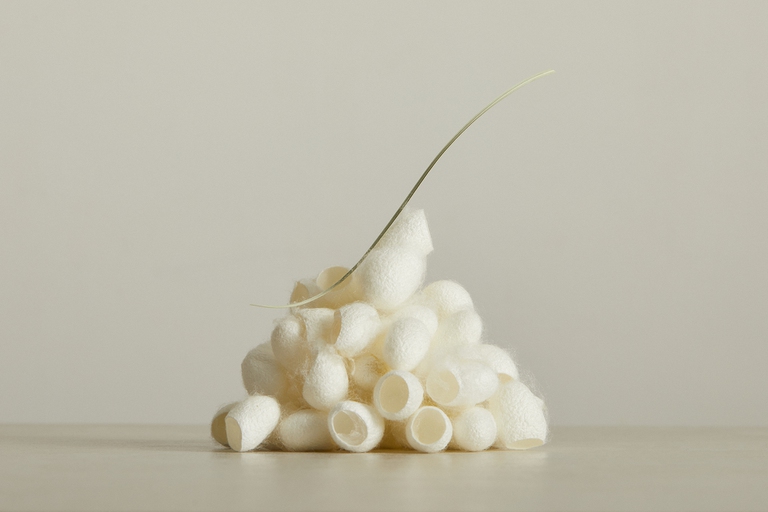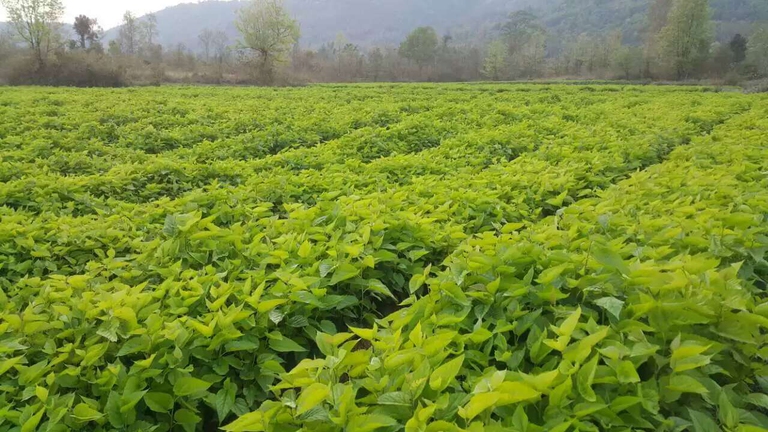https://www.lifegate.it/seta-continua-discontinua-selvaggia
- |
- Silk is a natural fiber of animal origin that is intrinsically sustainable due to the low environmental impact of its production, but not all types are also cruelty free.
- To obtain continuous silk, for example, the cocoon must be kept intact, which necessarily involves the death of the larva that produced it, the Bombyx mori.
- To produce discontinuous silk it is not necessary to kill the larva because it is made with shorter, broken threads, spun together with other premium fibers such as wool and cashmere to obtain other textile materials, or used for padding.
There silk, like all other textile fibers obtained from animals, is a natural material with an intrinsic basis of textile sustainability.In fact, its production does not require a polluting process and, by linking itself to an agricultural system that preserves the territory like the mulberry cultivation, it also has value from that point of view.Like every fiber obtained from a living organism However, it is advisable to make the necessary distinctions regarding the well-being and protection of the animal.For this reason we must distinguish between continuous silk, discontinuous and some types of wild silk:in fact, not all silks are cruelty free.It should also be specified that the silk market within the entire textile sector is one niche:with a percentage that varies between 0.15 and 0.20 percent, in fact, it represents only a very small part of the fibers of animal origin, i.e. the 2 percent of the total fibers produced.

Silk can be said to be a sustainable fibre, but not all are the same
Silk production is sustainable from the point of view of the material itself, because production does not limit natural resources for future generations.The cultivation of silk is in fact closely linked to the cultivation ofmulberry tree:there can be no silk without the mulberry tree and it is not profitable to maintain the mulberry tree if it does not produce silk.Mulberry needs very little water and, to be used to produce fine silk, it must absolutely not be treated with pesticides and fertilizers, because these substances cause a drop in cocoon production of at least 20-30 percent.Mulberry cultivation can also be used in contexts of regenerative agriculture because it protects the soil and avoids complementary intensive cultivation activities.Not only that:from a study based on the comparison between Indian and Brazilian silk production and cultivation, Silk industry and carbon footprint mitigation, it emerged that the cultivation of mulberry fields for the production of silk, in addition to keeping the ecosystem intact and representing an essential cultural and social element, is capable of reduce the impact of CO2 and greenhouse gases in the atmosphere.In fact, for every kilo of silk produced, they are stored 732.96 kilos of carbon dioxide.
The silk threads are nothing more than the production of slime from a lepidopteran larva, the Bombyx mori, which needs only mulberry leaves to feed itself.This larva is capable of producing threads of 900 meters long which, by twisting around their body, create the cocoon which represents the right environment for them to transform into a butterfly.The solidified strands of burr are the starting point, the raw material, of silk.The production of the yarn of what is defined continuous silk presupposes theintegrity of the cocoon, because it is necessary for the thread to be long to preserve the qualities that determine its value in this segment.To obtain continuous silk there is therefore no other possibility than to prevent the moth, the larva, from transforming into a butterfly and, at that point, breaking the cocoon and breaking the continuous thread.Silk obtained from continuous thread therefore presupposes that Bombyx mori is killed.In fact, when the cocoon thread breaks it is no longer economically convenient, because it is difficult from a technical point of view to recover it to create other threads.

Discontinuous silk, a cruelty free material
When the thread breaks, you have a fiber cocoon which is the starting point for making the instead discontinuous silk:in fact, when the cocoon is not used for the production of a single thread, it is not a problem if the larva "flickers", that is, it transforms into a chrysalis and then into a butterfly.There are in fact discontinuous silk productions that derive from cocoons that are left to emerge to collect the subsequent production of eggs, which are used for reproduction and to obtain other specimens;but there are also types of animals that create cocoons that already have holes in the upper part.Different types of yarns are produced from discontinuous silk, suitably processed and recovered, useful for multiple productions depending on which “fall me”, or which by-products deriving from the cocoon are used.
“Discontinuous silk is no less valuable, but it is the raw material for the production of different types of yarns, used pure or for mix with other noble fibres like cashmere, wool, alpaca, vicuna, linen, hemp or with other natural fibers such as cotton, viscose or nylon,” he explains Silvio Mandelli, CEO of Cosetex, a textile company specialized in the discontinuous silk sector for more than 120 years.“As Cosetex we are suppliers of the major groups of spinners and for example we supply many wool mills in the Biella area for the creation of their blends:they use silk in combination with other fibres, such as wool or cashmere, to create threads that are different from continuous threads, but not necessarily less premium.Taking advantage of the excellent characteristics of the discontinuous silk fibre, we have designed and patented T.Silk, a series of 100 percent silk padding for bedding and clothing.The discontinuous fiber has some characteristics of thermoregulation which are exceptional, they don't make you sweat and keep your body temperature constant."
Although it is an industrial production, silk production has a lot of benefits little waste because the silk system is quite closed and is recycled a lot: every element of production is reused.Even the chrysalises resulting from the death of the moth, for example, are recycled as fertilizers while the larva itself, in China where most of the production is located, is a highly consumed food.In the case of discontinuous silk, the aspect of reuse is maximized because no segment of fiber is thrown away:“Each production step has its by-product, with a different fiber length, which is reused to produce other threads and characterize them in a different way,” continues Mandelli.“Some appropriately parallelized and processed fibers can be mixed with combed wool, others with combed cashmere, still others with short cotton fibres.The even shorter fiber can be used for yarns and textured fabrics that seek an irregular appearance, or partly for padding".

The use of silk is discontinuous in other sectors
Two natural proteins, la, are combined in silk fibroin and the sericin, which are produced by the silkworm and are highly compatible with those of our skin.Fibroin is a fibrous and similar to the keratin of hair and nails, while sericin is a natural glue that is widely used in cosmetics.“These two proteins are extracted from silk waste:sericin is mainly intended forbeauty industry while fibroin is used in operations human cell regeneration, such as ligament reconstruction, because it is highly compatible and therefore minimizes the risk of rejection and has excellent flexibility.There are also innovative projects in food, packaging, aeronautical components, sound and acoustic insulation for the production of corneas or eardrums of the ears, fibroin prostheses”.
And wild silk?
The Bombyx mori, the moment it emerges from the cocoon, becomes a butterfly and has neither a digestive system nor a nervous system.Because of this lives from 24 to 48 hours during which it mates, produces eggs and then dies.In fact, this animal is now domesticated and has undergone cross-breeding and adaptations such that he is no longer able to live independently:today, without human intervention, it would not be able to feed itself or reproduce.At least as far as the silkworm that produces the most common silk is concerned.

On the contrary, the wild silk it is produced starting from a unbred larvae than on some specific typologies they create an already open cocoon, not usable for continuous thread;it is therefore not necessary to kill the moth before it becomes a butterfly.It is produced in China, India, in some parts of Thailand, Vietnam and in general in many Far East countries, and includes some types, called peace silk or ahimsa, used in the past by Mahatma Gandhi.
